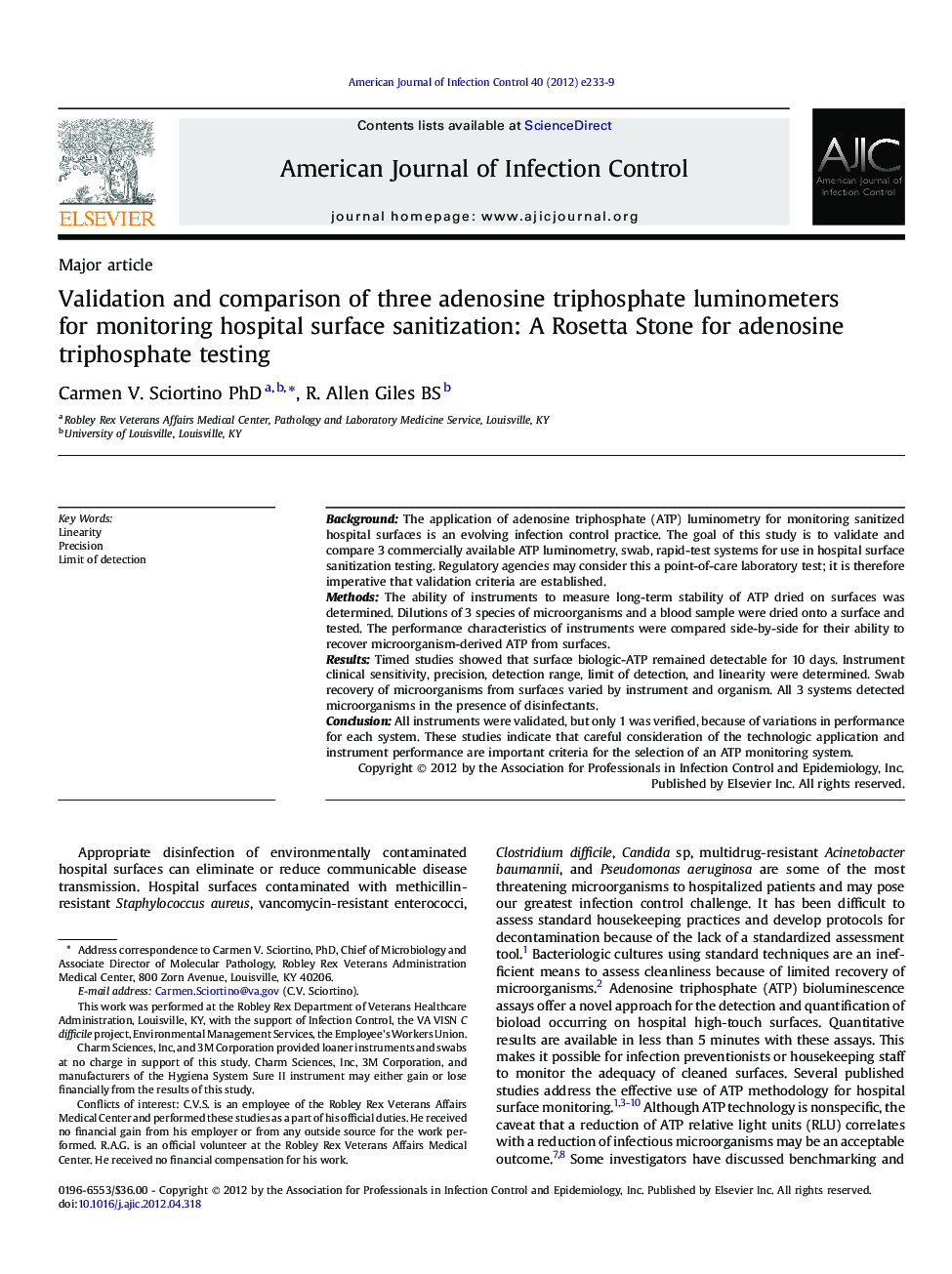| کد مقاله | کد نشریه | سال انتشار | مقاله انگلیسی | نسخه تمام متن |
|---|---|---|---|---|
| 2637759 | 1563508 | 2012 | 7 صفحه PDF | دانلود رایگان |

BackgroundThe application of adenosine triphosphate (ATP) luminometry for monitoring sanitized hospital surfaces is an evolving infection control practice. The goal of this study is to validate and compare 3 commercially available ATP luminometry, swab, rapid-test systems for use in hospital surface sanitization testing. Regulatory agencies may consider this a point-of-care laboratory test; it is therefore imperative that validation criteria are established.MethodsThe ability of instruments to measure long-term stability of ATP dried on surfaces was determined. Dilutions of 3 species of microorganisms and a blood sample were dried onto a surface and tested. The performance characteristics of instruments were compared side-by-side for their ability to recover microorganism-derived ATP from surfaces.ResultsTimed studies showed that surface biologic-ATP remained detectable for 10 days. Instrument clinical sensitivity, precision, detection range, limit of detection, and linearity were determined. Swab recovery of microorganisms from surfaces varied by instrument and organism. All 3 systems detected microorganisms in the presence of disinfectants.ConclusionAll instruments were validated, but only 1 was verified, because of variations in performance for each system. These studies indicate that careful consideration of the technologic application and instrument performance are important criteria for the selection of an ATP monitoring system.
Journal: American Journal of Infection Control - Volume 40, Issue 8, October 2012, Pages e233–e239